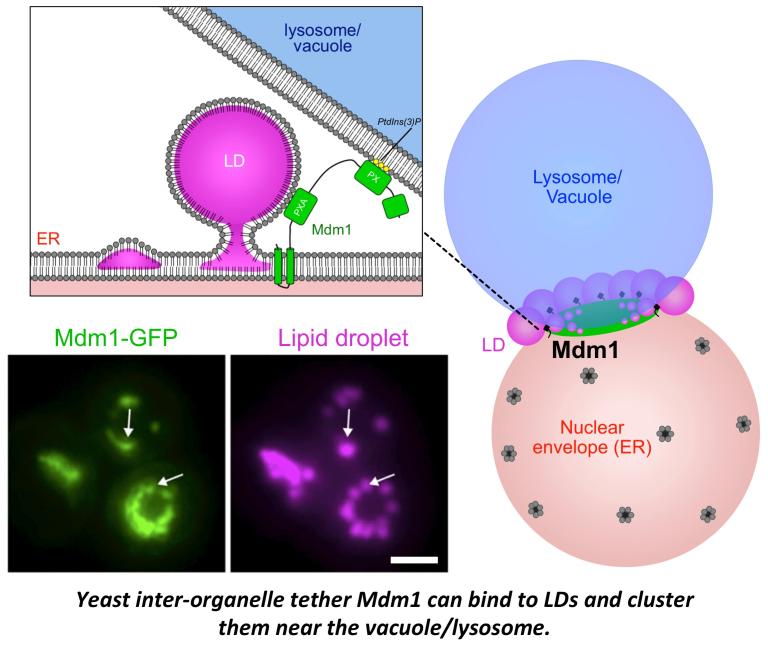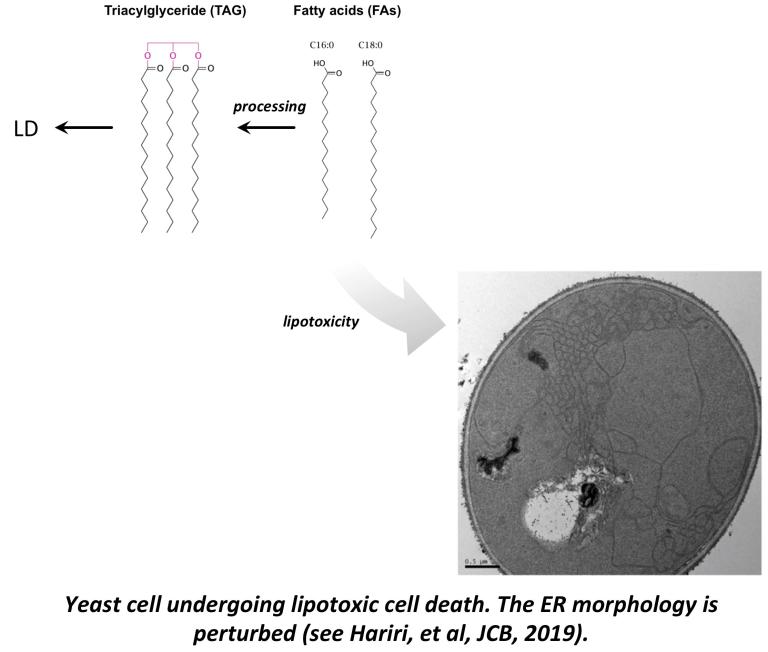How do cells store and organize their fat?
Life presents energetic and metabolic challenges. To ensure their survival in a constantly changing environment, cells have developed ways to store excess nutrients in the form of high-energy triglycerides (TAG, or TG) kept within lipid droplets (LDs). LDs are a unique organelle surrounded by a lipid monolayer, and contain a core of neutral lipids like TAG or sterol-ester. They are made on the surface of the endoplasmic reticulum (ER), and bud into the cytoplasm.

Tethers like Mdm1 can spatially organize LDs at organelle contact sites
Cells express proteins that can bind to LDs and tether them to other organelles. One such protein is yeast Mdm1, an ER protein that binds to the vacuole/lysosome and also LDs. Mdm1 regulates the attachment of LDs to the vacuole/lysosome surface. It also promotes fatty acid incorporation into LDs by recruiting the fatty acyl-CoA ligase Faa1 to LD bud sites (see Hariri, EMBO reports, 2017; Hariri, JCB, 2019). Mdm1 is highly conserved in humans as Snx14, which also promotes LD biogenesis (Bryant, HMG, 2018; Datta, JCB, 2019; Datta, PNAS, 2020).

Fatty acid accumulation can lead to lipotoxic cell death
Fatty acids (FAs) are essential metabolites but can be toxic to cells at high doses. Cells deal with FAs by processing them into neutral lipids like TAG and storing them in LDs. Defects in FA processing or TAG synthesis can lead to the pathological accumulation of FAs, and lipotoxic cell death (see Hariri, et al, JCB, 2019). Several metabolic diseases including obesity and type 2 diabetes also exhibit elevated circulating FAs.
